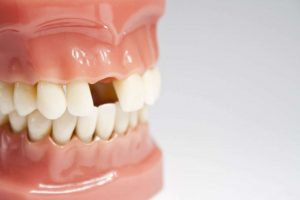The success of tooth implants relies on a fascinating interplay between dental science and the body’s natural regenerative capacities. For individuals with insufficient bone density, bone grafting emerges as a crucial component of the tooth implant process, ensuring a solid foundation for osseointegration. In this blog, we delve into the science behind bone grafting and its pivotal role in enhancing osseointegration for successful dental implants Melbourne.
Osseointegration: The Key to Tooth Implant Success
Osseointegration is the biological phenomenon that forms the cornerstone of successful tooth implants. It refers to the process where the implant, typically made of biocompatible materials like titanium, fuses with the surrounding jawbone, essentially becoming a part of the natural bone structure. This integration provides stability and support, mimicking the function of a natural tooth root.
The Challenge of Insufficient Bone Density
Not everyone seeking tooth implants in Melbourne has an ideal jawbone structure for immediate implantation. Factors such as tooth loss, periodontal disease, or congenital conditions can lead to inadequate bone density, making it challenging to achieve optimal osseointegration. This is where bone grafting enters the equation.
Bone Grafting: A Scientific Solution
Bone grafting is a surgical procedure that involves adding bone material to areas with insufficient density. The science behind bone grafting is founded on the body’s remarkable ability to regenerate and remodel bone tissue. The graft material serves as a scaffold, providing structural support and stimulating the body’s natural processes to create new bone.
Graft Material Options and Sources
Several materials can be used for bone grafting, each with its own scientific rationale:
- Autografts: Utilizing bone harvested from the patient’s own body, often from the hip or jaw, ensures compatibility and minimizes the risk of rejection.
- Allografts: Graft material sourced from a donor, carefully processed to eliminate potential contaminants while preserving the bone’s structural properties.
- Xenografts: Derived from animal sources, typically bovine or porcine, these grafts undergo thorough processing to make them biocompatible and suitable for human use.
- Synthetic Grafts: Lab-created materials designed to mimic the structure and function of natural bone, offering a reliable alternative for those averse to using biological grafts.
The Healing Process: Guiding Bone Regeneration
Once the graft material is in place, the body initiates a complex series of events. Specialized cells, such as osteoblasts, begin to populate the graft, laying down a matrix of minerals that gradually mineralizes into new bone tissue. This process is supported by a network of blood vessels that deliver oxygen and nutrients essential for bone regeneration.
Time and Patience: Allowing for Integration
The success of osseointegration hinges on giving the bone graft sufficient time to mature and become a robust, integrated structure. During this healing period, the patient’s commitment to post-surgery care, including adherence to dietary recommendations and oral hygiene practices, plays a crucial role in fostering optimal conditions for successful osseointegration.
If you’re considering tooth implants and bone grafting, consult with a qualified dental professional to explore the personalized solutions that align with your unique needs and ensure a successful outcome. Get in touch with a dental professional to know about the dental implants Melbourne cost today.

 A missing tooth can be painful, embarrassing, and lead to several oral issues. Unrivalled in durability and strength, the dental implants help restore the look and function of a missing tooth.
A missing tooth can be painful, embarrassing, and lead to several oral issues. Unrivalled in durability and strength, the dental implants help restore the look and function of a missing tooth.